
For the last six weeks we have been enjoying life in the beautiful San Blas archipelago, an out-of-the-way group of islands strung along the northeast coast of Panama. They tick all the boxes for Caribbean paradise: tiny cays clustered with palm trees, fringed with white sand beaches and surrounded by crystal clear turquoise water. The nearshore islands are crowded with huts but the outer islands are uninhabited or sport a single shaggy thatched shanty with an ulu (dugout canoe) pulled up on the beach.

The thing that makes the San Blas islands really special is the people who live there. The islands are in Guna Yala, an autonomous region of Panama which is home to the indigenous Guna indians. The Gunas are shy, peaceful people who live a tribal lifestyle with their own laws, culture and customs. They are small and slim with straight dark hair and pronounced noses. The men and children wear western clothes but the women look striking in their traditional dress; a dark sarong with a brightly coloured blouse covered by a vividly decorated bodice made from a mola. Their wrists and ankles are strung with multiple twists of orange and blue wini beads and they have a thick gold ring through the septum of the nose.
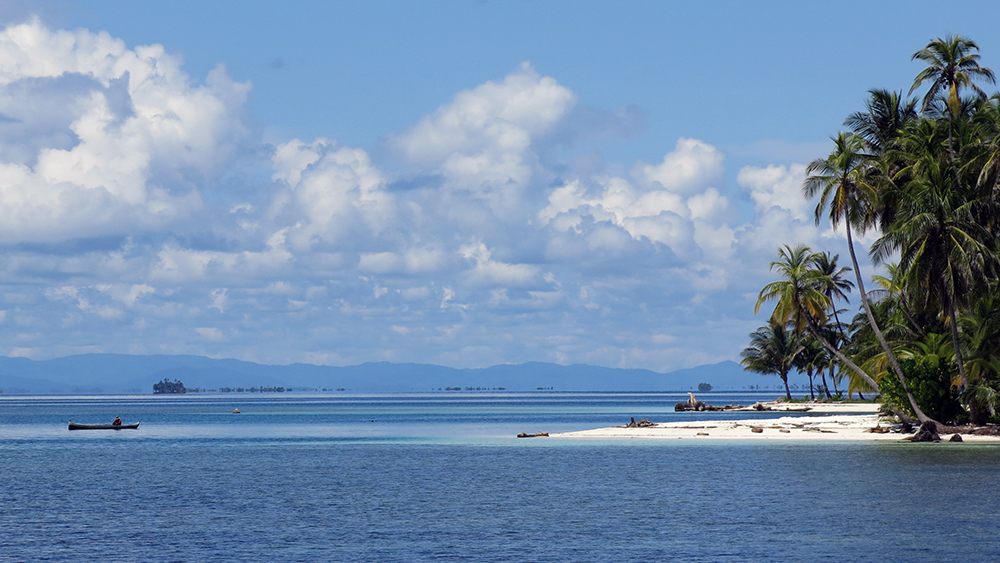
Tourism is one of the mainstays of their economy but the Gunas have avoided tourist development of any kind and there are no resorts or hotels on the islands. Day trippers come out to the islands in pangas to lie on the beach, soak in the azure waters and eat fish and rice in the wooden shacks amongst the palm trees. Those who wish to stay a little longer can charter a sail boat for a trip amongst the islands. Many yachts fill the cruising kitty during the hurricane season by hosting tourists while others transport backpackers between Colombia and Panama. The route is definitely on the beaten track and spending a couple of days in the San Blas islands is one of the highlights of the trip.

We left Turtle Cay marina bound for Chichime, the nearest island in the group. After a days sail we passed through the narrow cut in the reef and were surprised to find the anchorage already full of yachts and power boats. It was too late to go anywhere else so we squeezed in and drop the pick. Luckily people here don’t seem to mind anchoring very close together; with limited space in the sheltered water of the lagoon the more popular anchorages do not have the luxury of privacy.
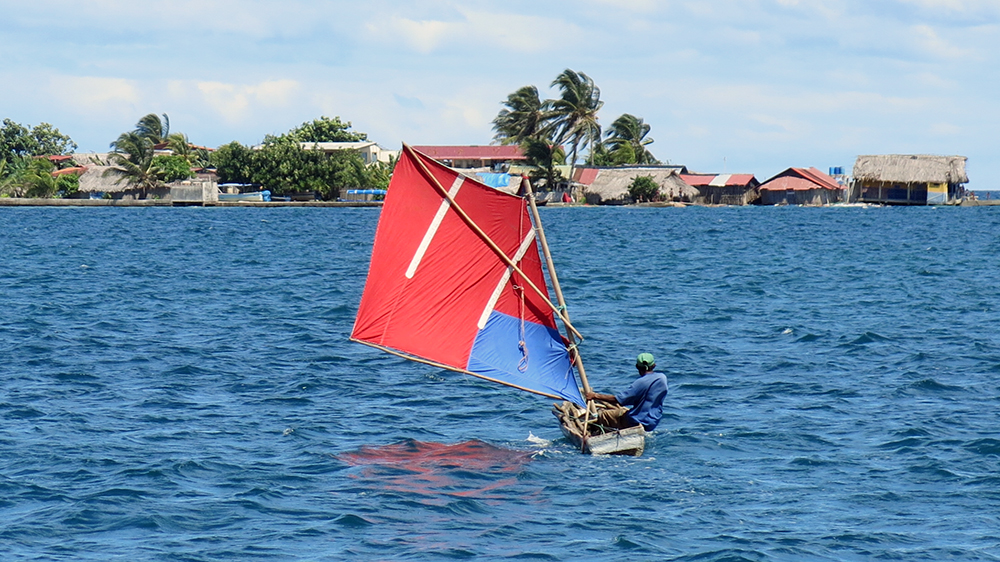
The next day we launched the kayak and decided to go snorkelling on the outside of the reef. We paddled through a break in the surf and enjoyed exploring the nooks and crannies of the coral, searching for grouper and snapper under the ledges and in the caves. We saw a nurse shark prowling a few feet below us but it paid us no attention. Getting back across the reef was a bit more of an adventure. We waited for a break in the rollers that were crashing on the reef then paddled like hell. A wave caught us, sped us along then left us perched on top of a bommie. We flailed the paddles around but couldn’t get off until the next wave picked us up and hurtled us into the lagoon. We were just glad just we didn’t roll!
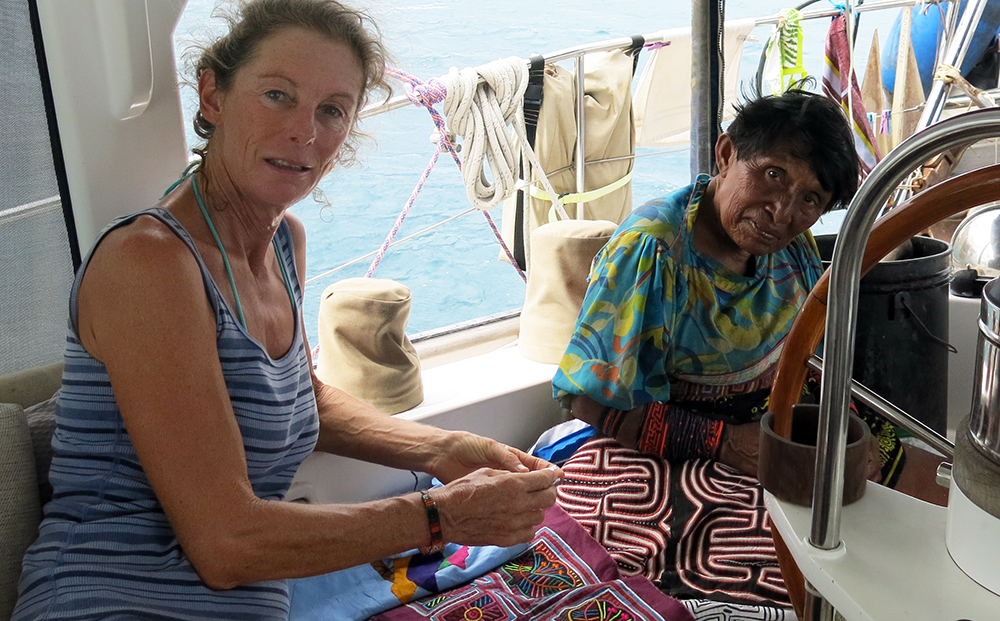
A few days later we moved down to East Lemmon Cays, another expanse of shallow reef spotted with tiny sandy islets which poke a metre or two above sea level and are encrusted with coconut palms. This was another popular spot but this time we were able to anchor away from the crowd in a channel between two islands. A couple of families live on the islands and as soon as we anchored we were approached by ulus selling lobsters and molas.
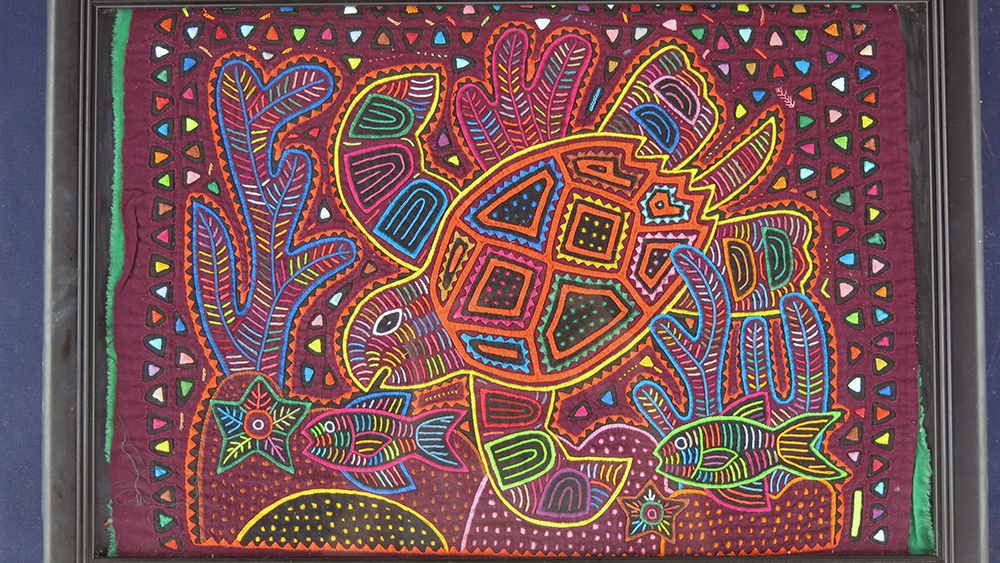
Molas are colourful applique pictures made from several layers of cloth and traditionally depicting birds or animals. They are made by cutting and sewing each layer to create the lines of the drawing and are finished with embroidery giving finer detail to the picture. High quailty molas have up to seven or eight layers of cloth and very fine stitching and can take upto 2-3 months to complete. The ladies paddle out to the boat in an ulu and wait patiently to attract your attention. Then they display their vibrant multi-coloured molas; carefully unfolding the cloth, explaining the motif and gently persuading you to buy one or two.
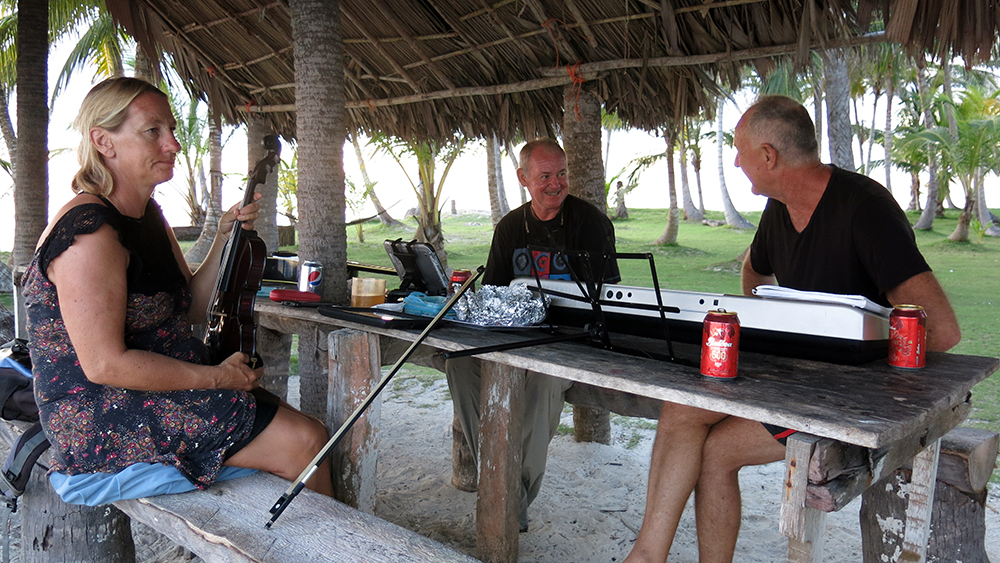
East Holandes Cays is another 10NM eastward along the island chain and because it is the furthest from shore it gets less rain than the other islands. The anchorage is spacious and we had dropped most of the backpacker/charter boats so it was easy to find a quiet spot of paradise for ourselves. There were a few other cruising boats around, Deb and Reggie on Runner like it so much they had been there for seventeen years! Steph and Stuart Matador had numerous instruments on board including a violin, a guitar and a banjo and Paul on Susimi was also a guitarist so we often got together for sundowners and a jam on one of the islands, very mellow apart from the sand flies!

There are no shops in the islands so finding fresh produce apart from coconuts, fish and lobsters can be a problem. However every week or so a veggie boat comes out from the mainland delivering fruit and veggies to the restaurants and boats hanging out in the cays. The dark blue prow of Juan Juan the Veggie Man’s panga loaded with goodies was a welcome sight in the anchorage.
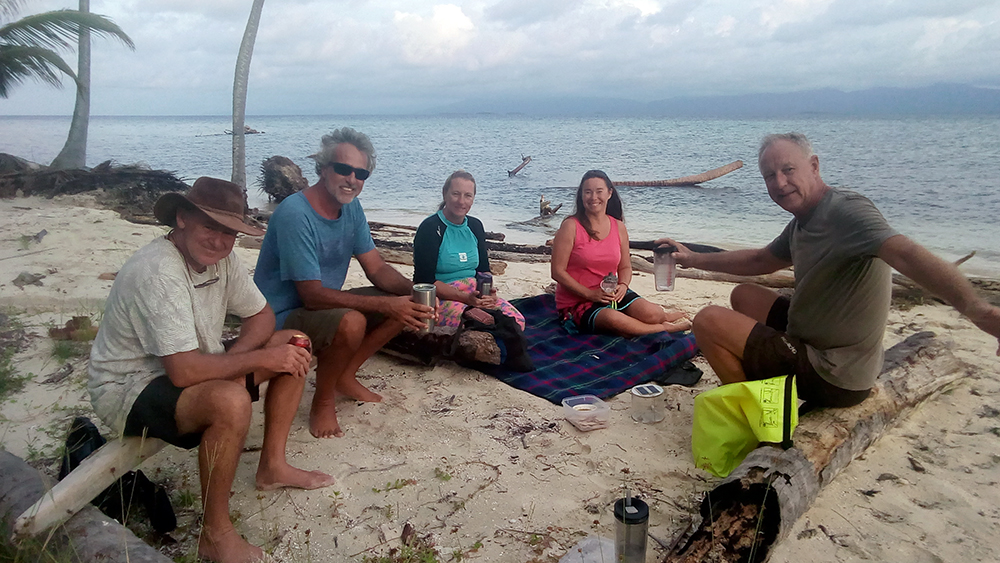
Snorkelling and kayaking were our main forms of entertainment in the San Blas islands. There were several great snorkelling spots but our favorite was Canbombia. We had the anchorage to ourselves (amazing!) and we took the dinghy around to the reef on the north side of the island. It was a wall with a fantastic array of soft and hard coral: tubes and pipes and ragged swaying fans, scarlet trees and big round brains teeming with brightly coloured reef fish of all shapes and sizes. We often saw nurse sharks and large rays but strangely not a single turtle.

After a month we needed to fill up our water tanks. There is no water available on the islands and our watermaker is turned off at the moment. Afternoon downpours were fairly frequent and it was surprising how much water we managed to collect in strategically placed buckets but nonethless we needed to top up. We sailed down to Nargana, an island close to the coast which is the largest settlement in Guna Yala and boasts the only ATM machine in the province. We picked up a 100L of water and managed to score some veggies and were all set for another couple of weeks in paradise.
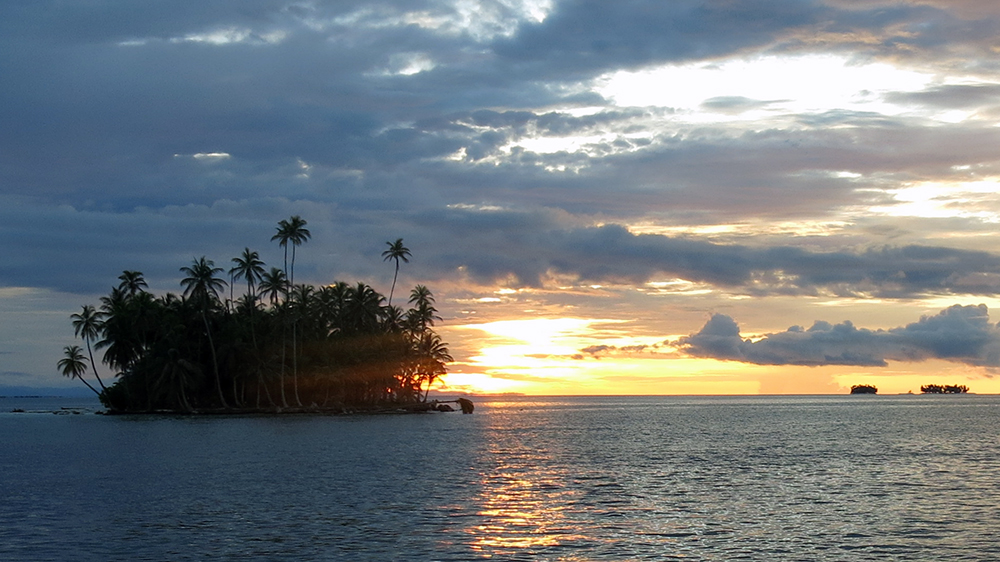
After six weeks in the remote and beautiful San Blas islands it was difficult to tear ourselves away but we had flights booked for a trip to NZ and Australia. It is our first trip back for four years so we are really looking forward to spending some time with family and friends downunder.
Woowee – here we come!!
Suzy
